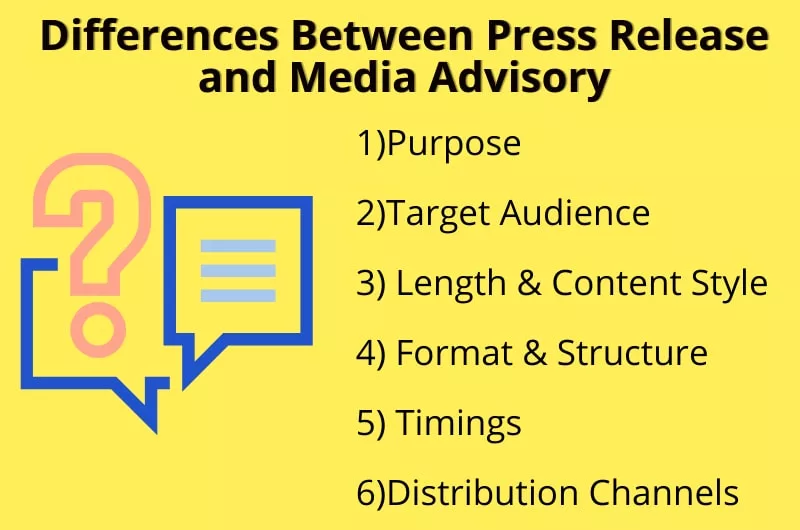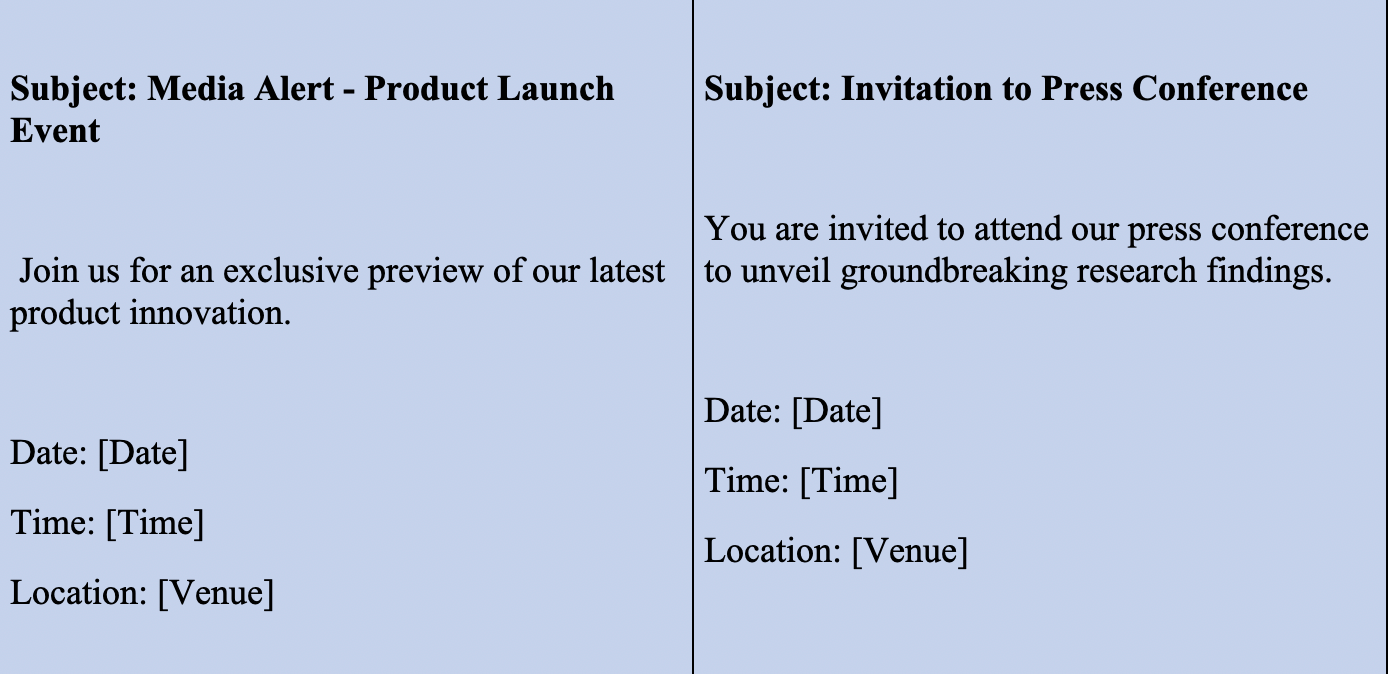Understanding the Difference Between Media Advisory and Press Release
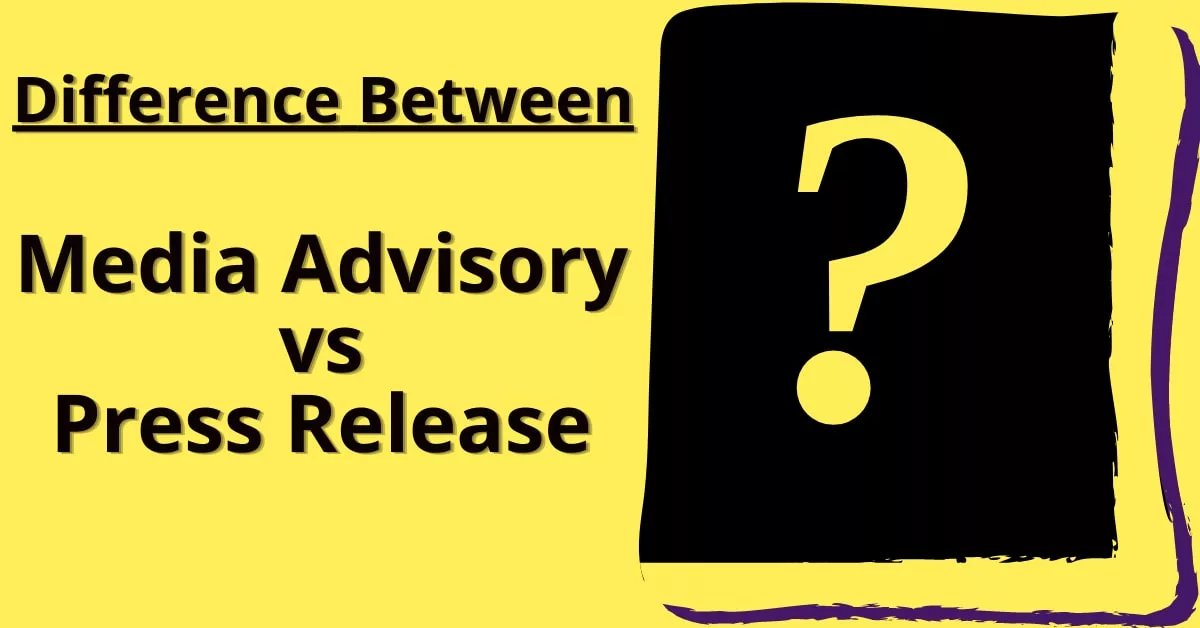
by Avneet Singh
In the world of public relations, strategic communication plays an important role in conveying messages effectively to the target audience. Two essential tools in the PR toolkit are media advisories and press releases. While both serve the purpose of disseminating information, they differ significantly in their format, purpose, and target audience. In this blog post, we will delve into the nuances of media advisory vs press release, exploring their distinct features, use cases, and key differences.
What is a Media Advisory?
A media advisory, also known as a media alert or media invitation, is a concise document that provides essential details about an upcoming event, announcement, or press opportunity. Unlike a press release, a media advisory is more focused on inviting journalists and media representatives to attend an event rather than providing comprehensive information. This type of communication serves as a precursor to the actual event, aiming to capture the attention and interest of the media community, encouraging their attendance and coverage.
Typically, a media advisory is characterized by its brevity and clarity, offering just enough information to entice media professionals without overwhelming them with details. Key components of a media advisory include the event’s date, time, and location, along with a brief overview of the subject matter.
When to Use a Media Advisory?
Media advisories are best suited for events that journalists can physically attend, such as press conferences, product launches, or exclusive interviews. They can also be used for Pre-Event Awareness giving media professionals enough time to plan their coverage. By providing a teaser of what’s to come, organizations can capture the interest of journalists.
In situations where rapid response is crucial, a media advisory can be employed to notify the media quickly, ensuring that essential details are communicated promptly. This is particularly important for managing crisis and proactively addressing media inquiries. Moreover, For events that offer exclusive VIP access, a media advisory can convey the exclusivity of the opportunity to journalists.
What is a Press Release?
A press release, on the other hand, is a comprehensive document that provides detailed information about a particular event, announcement, or news item. Its primary purpose is to inform the media and the public about the key details surrounding the news, including who, what, when, where, why, and how. Unlike a media advisory, which serves as a brief invitation to an upcoming event, a press release serves as a comprehensive package of information intended for distribution to a broader audience, including journalists, editors, bloggers, and the general public.
When to Use a Press Release?
Press releases are ideal for disseminating information that requires in-depth coverage and broader distribution. This could include major company announcements such as mergers, acquisitions, leadership changes, significant achievements, product launches, or crisis communications in which well-crafted press releases can help control the narrative and reassure stakeholders. Press releases are effective for sharing industry insights, research findings, or reports.
Key Differences Between Media Advisory vs Press Release:
Understanding these key differences can help organizations effectively use both media advisories and press releases in their communication strategies, depending on the nature of the announcement and the intended audience.
Purpose:
Media Advisory: The primary purpose of a media advisory is to invite journalists and media representatives to cover a specific event or announcement.
Press Release: Press releases are designed to provide comprehensive information to the media and the public, aiming to generate widespread coverage and understanding.
Target Audience:
Media Advisory: The target audience for a media advisory is journalists, reporters, and media representatives who are expected to attend the event.
Press Release: Press releases target a broader audience, including journalists, bloggers, editors, and the general public.
Length & Content Style:
Media Advisory: Concise and to the point, media advisories are usually short, focusing on the essential details of the event, such as date, time, location, and a brief overview.
Press Release: Press releases are more extensive, offering a detailed account of the news or announcement. They include quotes, background information, and additional context to provide a comprehensive understanding.
Format & Structure:
Media Advisory: Typically, media advisories have a straightforward format, emphasizing key information and logistical details. They may include a headline, date, time, location, and a brief description of the event.
Press Release: Press releases follow a more structured format, including a headline, subheadings, body text, boilerplate, and contact information. The inverted pyramid style is often employed, with the most critical information presented at the beginning.
Timings:
Media Advisory: Sent out in advance of an event, usually a few days or weeks before, to provide ample time for journalists to plan their attendance.
Press Release: Released at the time of the news event or announcement or shortly beforehand to ensure timely and simultaneous coverage.
Distribution Channels:
Media Advisory: Primarily distributed directly to journalists, media outlets, and relevant stakeholders who are likely to attend the event.
Press Release: Distributed widely through various channels, including press release distribution services, email, and company websites, to reach a broader audience.
Examples of Media Advisory:
Let’s understand this better by looking at some Media advisory vs press release examples
Examples of Press Release:
We have written a detailed blogpost on press release templates/examples. You can also read this blogpost to learn about 10 types of press release and how to use them.
Conclusion:
In navigating the complex realm of media relations, understanding the distinctions between media advisory vs press release is crucial. While media advisories serve as invitations to events, press releases act as comprehensive information capsules for wider distribution. PR professionals must carefully select the appropriate tool based on the nature of the news and the desired outcome. By leveraging both media advisories and press releases strategically, organizations can effectively communicate their messages and garner the attention they deserve in an ever-evolving media landscape.
Recommended Posts

How to Cite a Press Release? A Comprehensive Guide
April 12, 2024
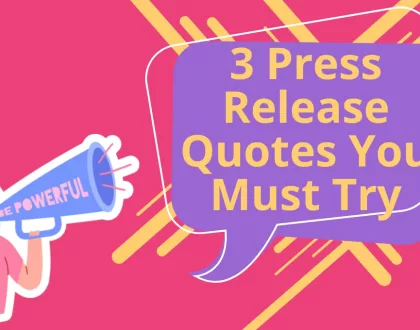
3 Press Release Quotes You Must Try
March 20, 2024
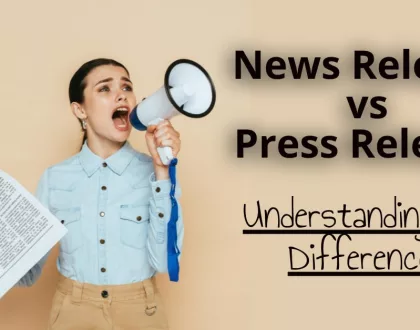
News Release vs Press Release: Understanding the Differences
January 18, 2024


